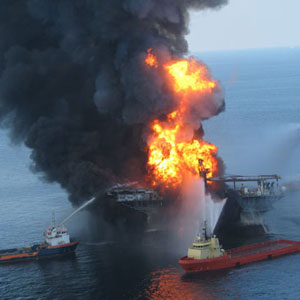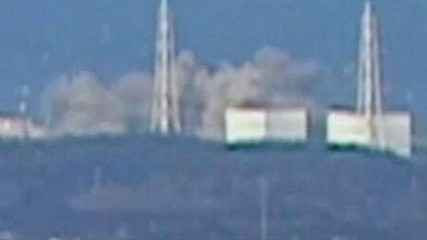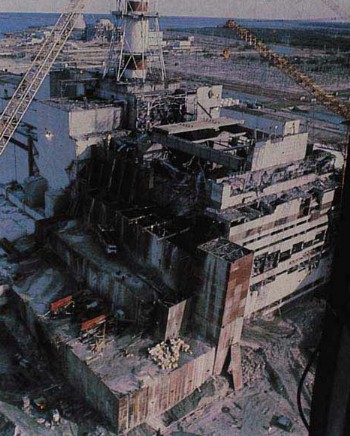
As April is upon us, we have a few important dates that really define the challenges we face as humanity and the future health of planet Earth. Yes, on April 22, we will 'celebrate' the 41st anniversary of the first Earth Day, but we will also mark some tragic reminders of our nation's and world's addiction to dirty fossil fuels and dangerous nuclear power:
•On April 5th, we will mark the tragedy at the Upper Big Branch coal mine in West Virgina where 29 coal miners lost their lives;
•On April 20, we will sadly reflect on the 1 year anniversary of the tragic BP Oil Spill  which began with the Deepwater Horizon explosion on April 20, 2010;
which began with the Deepwater Horizon explosion on April 20, 2010;
•On April 25, we will mark the 25th anniversary of the Chernobyl disaster;
•On April 11, we will mark the 1 month anniversary since the earthquake and tsunami devastated Japan, and began the downward spiral of the failure of the Fukushima nuclear power plant. 
We were all moved and horrified by the incredible images of the tsunami ravaging communities in Japan -- the power of nature is great, and our hearts go out to the thousands who lost their lives and their families.
But in our attempt to harness nature for human progress, we have also seen the power of technology gone bad as at least four nuclear power reactors risk meltdowns, thereby putting workers, the communities, and the environment at risk.
On April 25, 1986, almost 25 years ago, we had our last reminder about how our attempt to tap the power of the atom to provide electricity has gone awry. The Chernobyl accident was without precedent, and realized the worst fears about the nuclear industry. 
Our organization -- and President Gorbachev's concern for the environment -- was born, in part, out of that tragedy, and our focus over the past 18 years has included not only advocating for protections against proliferation of nuclear weapons and fissile materials, but also pushing for sustainable and safe energy sources -- solar, wind, and energy efficiency -- to reduce our dependency on dangerous nuclear power and other dirty sources of energy.
The irony is that in Washington, President Obama and the Republicans agree on one thing: we should decrease loan guarantees for renewable energy, and increase them for nuclear power. Now, perhaps that is a simplification, as the White House has proposed a continuation of loan guarantees for clean energy, and the Republicans have zeroed them out.
In 2010, President Obama reduced the $6 billion in renewable energy guarantees in the stimulus package to $2.5 billion. Recently, the White House requested $54 billion in the 2011-12 federal budget for nuclear energy loan guarantees, an increase of $36 billion. The House has zeroed out all loan guarantees for clean energy in their budget bill, but has kept in nuclear power loan guarantees.
Still, now is the time we should be doubling down on energy efficiency and renewable energy sources, to create a more resilient electrical infrastructure, create green jobs, and help the US "win the future" rather than continue subsidizing the nuclear, oil, and coal industries.
I don't need to lay out here all the challenges with our addiction to fossil fuels, or the myriad benefits of clean energy and efficiency investments.
But many people -- including environmentalists -- point to nuclear power's role in reducing greenhouse gas emissions. It is true that nuclear plants do not produce greenhouse gas emissions as they produce electricity. However, if one examines the full life-cycle of nuclear power from uranium mining to spent fuel storage, the amount of pollution to the air, land, and water is enormous.
The challenges of storing -- let alone disposing -- of nuclear waste and fuel rods are significant and costly. I worked on the issues of nuclear waste disposal 20 years ago, when there was a scheme to open a 'low-level' radioactive waste dump -- with unlined dirt trenches -- near the Colorado River, the primary source of LA's drinking water. The organization I ran led efforts to propose safer alternatives to burying our radioactive waste, and we stopped the dump in the end. But its important to note that included in the dump were to be reactor parts that are nearly as radioactive as the fuel rods -- high level waste -- and dangerous for thousands of years.
How do we ensure the safety of human health and the environment for that long from such dangers? Well, planners for the WIPP facility in New Mexico have been grappling with just such a question. WIPP is storing transuranic radioactive waste (i.e., the byproduct of weapons production and nuclear research and power production) for 10,000 years, and are trying to conceive of ways to communicate 'danger' in the future, when perhaps human civilization as we know will no longer be around. These markers or symbols of danger will need to be in place by 2038, the date by which the facility is scheduled to be closed.
Well, perhaps we have already seen the ultimate warning symbol. The accidents at the Fukushima nuclear plants are a shocking reminder of the reality of nuclear power threats, and the huge modern technological risks for present and future generations.
As we mark these important dates in April, we must remember the lessons they have taught us. We need to double our efforts to increase investment in clean energy sources like solar and wind so places like the Gulf Coast can lead the way to a clean energy future, and strategic legislation like AB 758 in California can set standards for increasing efficiency in all our buildings and hence create a market where aspirations have failed to meet need.
And, let's take a moment to both call on our leaders -- political, corporate and media alike -- and celebrate those commitments on Earth Day, and engage our friends and family to do the same.
